Innovators worked hard to give your stereo sound quality that you love. Every little part in it plays a particular role. If you’re missing even just one, you’ll probably end up devastated with the quality of your head unit. One of these underestimated parts is called the car audio capacitor.
Not a lot of vehicle owners know a lot about this particular part. Sometimes, even the savviest of them don’t know what a capacitor is for. Good thing Philkotse.com is here to point you in the right direction. Today, we’ll help you understand what a car audio capacitor is. We’ll also tell you what it does and how you can tell if your car needs one. Find out all about it right here!
1. Car audio capacitors
In the simplest terms, a car audio capacitor is an electrical part that’s capable of storing energy. This can be compared to the regular batteries you see in everyday life. As a matter of fact, the very first “batteries” weren’t referred to as batteries. They were actually old capacitors.
The first capacitors were made from glass jars that were filled with water. The only difference is that capacitors are designed to discharge and store power very quickly compared to batteries. If used in car-audio systems, this capability can be tapped to provide your amplifier with an on-demand power source.
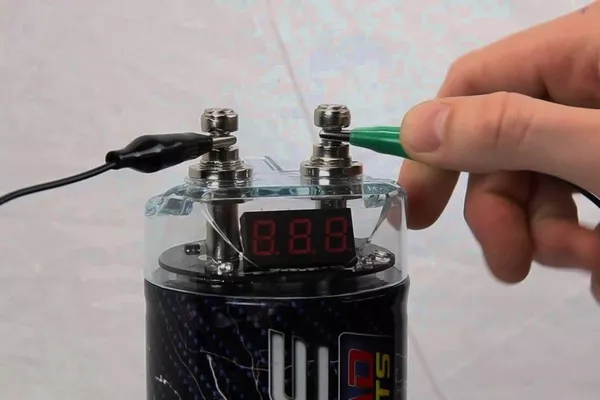
A car audio capacitor is an electrical part that’s capable of storing energy
Most capacitors’ energy density is less than that of an alkaline battery. In fact, it’s even said to be a thousand times less! But a car audio capacitor is usually larger than those that you can find in usual consumer products.
>>> Check out:
- Customizing the car audio system: 7 tips for Filipino drivers.
- 5 ways you might not know when upgrading a car audio system.
2. Car audio systems are power-hungry
You can use a capacitor to feed hungry amps if used in-car audio systems. This is because a powerful amplifier could possibly outstrip your car’s electrical system of its power-generating capabilities. If that happens, you may see your dashboard lights or headlights go dim while playing strong bass notes.
A car audio capacitor works by being supplied with voltage from the vehicle’s electrical system. This charges up the capacitor so that it has ample energy whenever it needs it.
If your amp suddenly needs more amperage than the amount your electrical system can supply, it can result in a noticeable voltage drop at your amp. But you won’t have to worry because your capacitor has your amp covered.
>>> FYI: Your car's electrical system and what you need to know when it shuts down
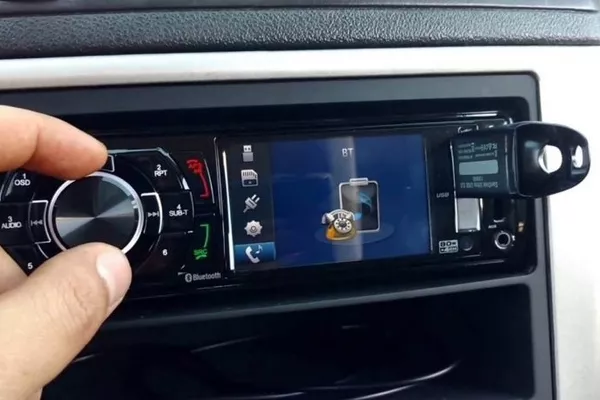
You can use a capacitor to feed hungry amps of car audio systems
Car audio capacitors are usually installed right next to the amplifier. If not, it is usually as close as space or system allows it to be. This is why there are fewer voltage drops. This is also why most electrical systems continue to operate normally. Capacitors are also able to discharge and charge rather quickly. This is what makes them easier to “refill” in case your amps need extra power.
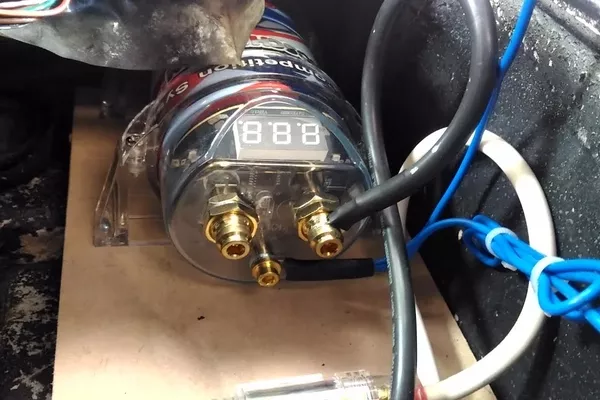
A car audio capacitor works through current supplied by a vehicle’s electrical system
3. Does your audio system need a capacitor?
If you have a battery, a stock charging system and a powerful amplifier, you may need a stiffening cap. Unfortunately, adding a capacitor to your in-car audio won’t have too much of a difference. This is unless a few very specific criteria are met. Here are some of those main reasons to need a capacitor:
- An extremely powerful amplifier
- A low-capacity car battery
- An underpowered alternator
- Excessively low or long gauge amperage power wire
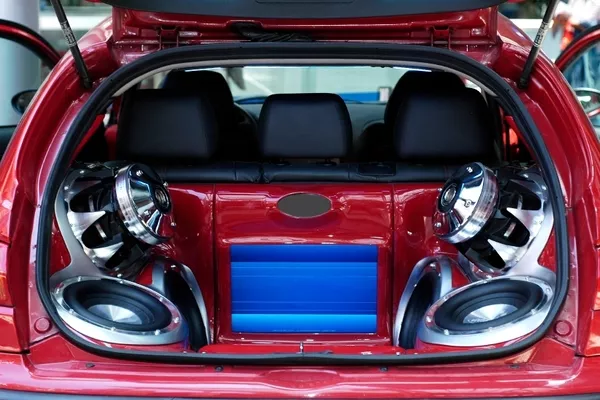
You can use a car audio capacitor to help provide power to high-performance in-car audio systems
The most important sign that you need to check is dimming headlights. If your headlights suddenly go dim after turning up your radio, your charging system may not be up to the task. This could also be the case if the lights go dim in loud bass parts of the audio.
The problem is that a stiffening cap is not a guaranteed solution to the problem. If either the amp is too demanding or the charging system is underpowered, a stiffening cap might not solve it.
>>> Also check: What you need to know about car audio and amplifiers.
4. What is a stiffening cap?
Installing a vehicle audio capacitor actually isn’t difficult, but the task can be fairly dangerous. Large caps are capable of discharging and storing a good amount of energy. This is why you need to be a little bit more careful when handling them.
In fact, this is one of the most fragile parts of most car audio components. If you decide to buy a cap, remember that it should come with installation instructions and safety precautions.
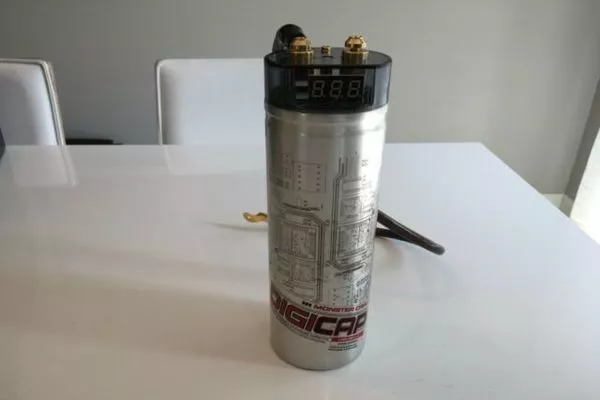
If you decide to buy a cap, remember that it should come with installation instructions and safety precautions
It should also come with a resistor or a light bulb that can be used to discharge the device. If you have never tried installing a stiffening cap before, read all the guides carefully. Car audio capacitors should be installed as close to the amplifier as possible. These will usually have one or two terminals. In some cases, it has a distribution block.
Recent posts
- [Philkotse guide] Building the ‘carputer’ of your dreams Dec 02, 2019
- [Philkotse tips] How to choose the right head unit for your car Aug 09, 2022
- 4 aftermarket parts that are not covered by car insurance Aug 09, 2022
- Must-know tips to choose the best aftermarket car head units Aug 09, 2022
- Best in-car entertainment ideas to fight boredom while in a long drive Oct 31, 2017












